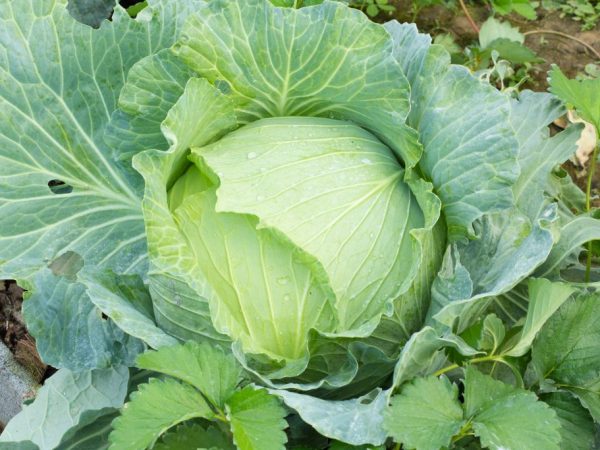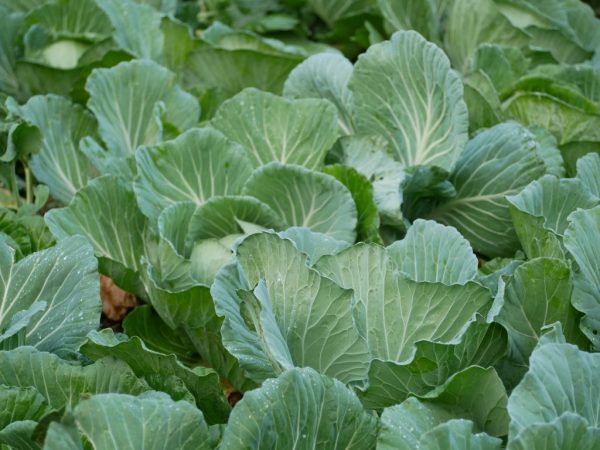Description of cabbage Slava
Slava cabbage is one of the time-tested varieties that is grown everywhere. The quality characteristics of this variety are in many ways superior to other species. Used to prepare various culinary dishes, consumed raw, harvested for the winter.

Description of cabbage Slava
Variety characteristic
White cabbage Slava was bred by breeders at the Gribovskaya station. Due to its quality characteristics, the variety can be grown in any region.
The shelf life is 3-4 months (you need to maintain the temperature regime within 0 ℃). Throughout the entire period, the vegetable retains its taste and vitamin composition.
Slava cabbage is an unpretentious vegetable crop. Drought tolerant. The main advantage is a consistently high yield - about 12 kg / m2.
There are 2 types:
- cabbage variety Slava 1305;
- cabbage variety Slava Gribovskaya 231.
Both varieties are classified as medium-ripening vegetables. Glory 1305 ripens 130 days after the seedlings are picked, Gribovskaya 231 - 115. The second variety is more dense in structure, it is stored longer. You can distinguish them by their appearance, Slava 1305 is larger. Otherwise, there are practically no differences.
Description of the vegetable crop
Description of Slava cabbage:
- the head of cabbage is rounded, slightly flattened;
- diameter about 25 cm;
- weight from 2 to 5 kg;
- foliage is pale green, with a waxy bloom;
- the edges of the leaves are wavy;
- leafy rosette slightly raised;
- the inner stump is medium in size, the outer one is shortened.
Slava cabbage is perfect for fresh consumption, cooking and pickling. It lasts well for 3 months. Heads of cabbage contain a large amount of antioxidants (vitamin C) - 44 mg / 100g of raw material. Sugar is 5.6%, dry matter is 11.1%. The leaves taste sweet, very juicy.
Glory cabbage, thanks to its characteristics. has been used in traditional medicine for many years. It removes cholesterol, maintains a healthy intestinal microflora. Today, cabbage is often introduced into the diet of people with obesity and diabetes.
Growing
White cabbage Slava is grown using a seedling and non-seedling method. The plant is unpretentious, feels great in unheated greenhouses and in an open area. But, if you want to get a rich healthy harvest, you need to take care of the correct planting of seeds. The seedless growing method is used in greenhouses.
The first step is to prepare the ground. Cabbage grows well in slightly acidic soil. If the pH value exceeds the 6 mark, liming will have to be carried out. Start digging immediately after harvesting the previous crop. It is best to plant a vegetable crop in the place where potatoes, tomatoes, and legumes grew.

Good care will increase crop yields
Clear the area for planting from the remaining tops, and after cultivation, add fresh manure. You will need about 80 kg / m2.Instead of manure, humus can be used, it will be required less - 50 kg / m2.
Landing
Read the package description carefully before sowing seeds. The manufacturer indicates whether the planting material has been processed or not. If the treatment has not been carried out, soak the seeds in a weak solution of manganese or Fitoverma for a couple of hours.
If cultivation is planned in a seedless way, the prepared soil should be leveled with a rake, grooves should be made 1.5 cm deep. The optimum temperature in the greenhouse is 13 ℃. Leave a distance of 15 cm between the rows. After sowing the seeds, water the beds abundantly. After the sprouts appear, the seedlings need to be thinned out so that a distance of 5-7 cm remains between them. Watering is carried out as the soil dries up.
When planting in seedlings, the seeds are sown in common elongated pots. After the appearance of 2 full-fledged leaves, the seedlings are dived into separate cups. In early June-late May, plants are transplanted into open ground. Before picking on the site, the seedlings need to be hardened, gradually lowering the temperature in the greenhouse or setting the cups by the open window. The sprouts are planted at a distance of 30-40 cm.
Before the final dive into the ground, the area should be watered abundantly. You will need 15 liters per m2. The stems are buried in the soil to the level of the cotyledons.
Plant care
To get a good harvest, you need to organize proper care of Slava cabbage seedlings. In the northern regions, gardeners often face the problem of a sharp temperature drop. To protect the sprouts from frost, it is recommended to cover them with plastic wrap.
Watering time is determined by the condition of the soil. Do not let it dry out, but you do not need to flood the plants too much. The best option is to organize a drip irrigation system on the site. Remember to loosen the soil after each wetting.
You need about 20 liters of liquid per m2. Watering should be stopped 2 weeks before harvest. The first feeding is carried out at the stage of seedling germination. 10 days after planting the seeds, the following composition is introduced:
- water;
- superphosphates;
- ammonium nitrate;
- potash fertilizer.
After 2 weeks, organic matter is added. During the active growing season, after diving into open ground, use the same composition as for the first time, only with the addition of wood ash. From 1 to 15 August, the last organic feeding is carried out.
Diseases and pests
Slava cabbage is resistant to many diseases and pests. However, insects can move to your site from neighboring territories. Diseases develop due to improper care or adverse weather conditions.
One of the most common ailments is the black leg. The disease affects the root system, it can manifest itself even at an early stage of growth, so it is important to disinfect the seeds if it was not carried out by the manufacturer. As it grows, sprinkle the ground with ash, and then be sure to loosen it. If the disease has already begun to develop, the following drugs can be used as a treatment: Fitoflavin, Bactofit, Trichodermin.
Basic planting and care rules will help to avoid the development of fungal diseases:
- do not plant the plants too densely;
- do not flood the culture;
- loosen the soil more often.
A malicious pest that destroys cabbage leaves is aphids. You can prevent its spread by planting dill and parsley next to cabbage beds. These plants attract ladybirds, whose larvae feed on aphids. Cabbage moth is another insect that often settles in garden beds. To avoid its appearance, loosen the soil more often and remove weeds in time.
Conclusion
The Slava cabbage variety has occupied a leading position among other varieties for many years. The vegetable is perfectly stored, retains a firm structure, and perfectly tolerates transportation.The main advantage is good adaptation to any weather conditions, so it is grown everywhere.


